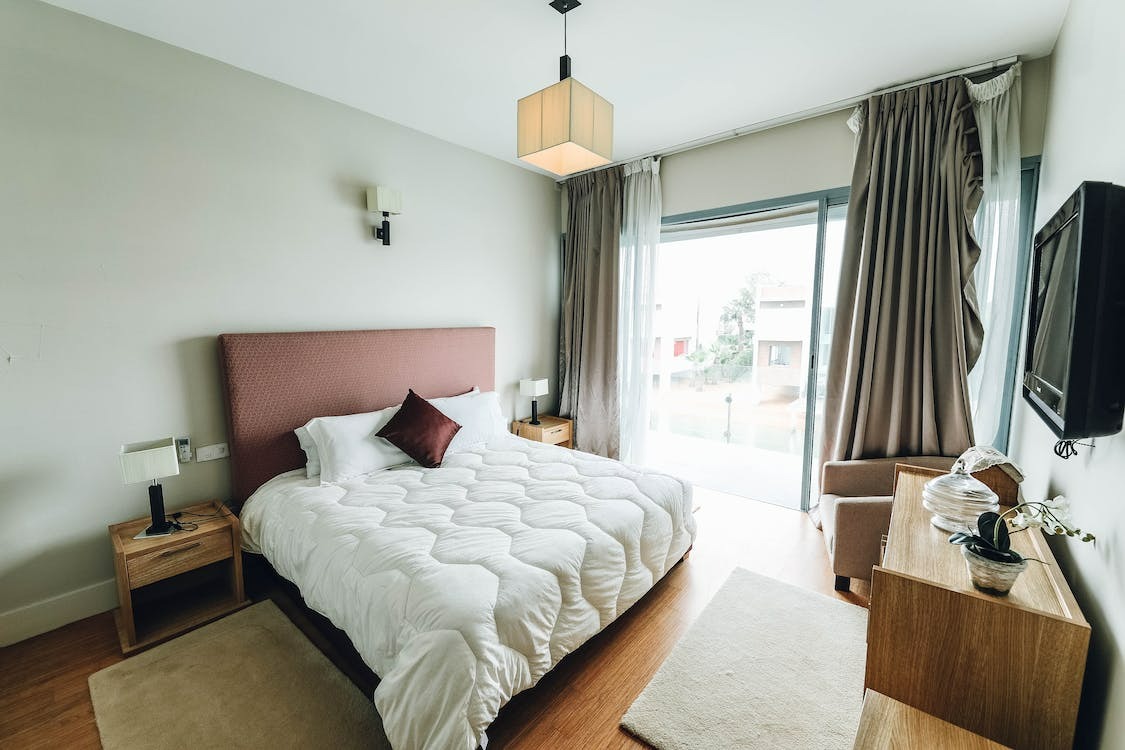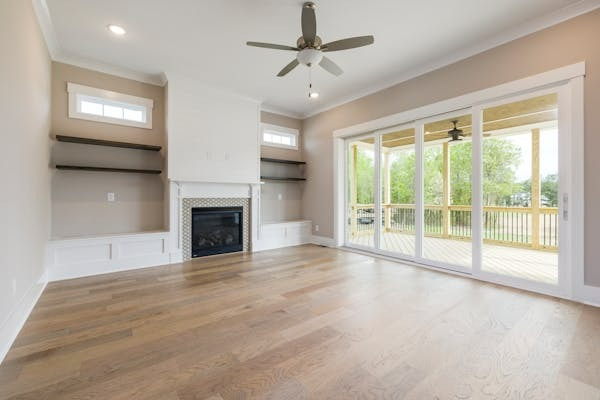When summer approaches, higher temperatures become more prevalent. Utilizing your air conditioning system extensively can lead to a significant increase in electricity consumption, resulting in higher expenses.
However, there exist strategies to decrease your expenditures during the summer season while still maintaining a comfortably cool indoor environment.
Outlined below are methods to effectively cool your residence without heavily relying on air conditioning.
Fan hack


Opting to keep your air conditioning off or not having one altogether can certainly lead to reduced energy costs. However, there’s a way to replicate the cooling effect.
Simply place a bowl filled with ice or an ice pack in front of a fan. This setup allows the cold emanating from the ice to effectively cool down the room, providing a similar sensation to air conditioning.
Blackout curtains
These effective insulators provide your home with protection against extreme temperatures. By shielding against both the sun’s intense heat in the summer and the cold in the winter, they offer year-round comfort.
Curtains in neutral shades featuring a white plastic backing have been shown to decrease heat absorption by 33 percent during the summer months.


Switch up those sheets
Many of us prefer cozy fabrics such as flannel or fleece for our bedding during the colder winter months. However, it’s advisable to swap these out for lighter materials like cotton as summer arrives.
Cotton fabrics breathe more easily and maintain a cooler feel.
Additionally, considering a buckwheat pillow could be beneficial, as it enables air circulation between the buckwheat hulls, preventing the retention of body heat.


Set those fans counter-clockwise
For those who utilize fans throughout the year, it’s important to make seasonal adjustments. During the summer, set your fan to rotate in a counter-clockwise direction and operate at a higher speed.
This configuration generates a wind-chill effect, producing a refreshing breeze that helps cool the surroundings.


Switch out those bulbs
Incandescent light bulbs emit heat, which can contribute to warmth indoors. To address this, it’s advisable to replace them with compact fluorescent lamps (CFLs) as they need replacement.
Incandescent bulbs are known to dissipate around 90 percent of their energy as heat, making them highly inefficient in terms of energy usage. By transitioning to CFLs, you can significantly reduce heat generation and energy wastage.


Use those exhaust fans
During the summer, it’s beneficial to keep your bathroom and kitchen exhaust fans running. These fans effectively extract the accumulating hot air from the room, providing a cooling effect.
This practice becomes especially important when engaging in activities such as cooking, showering, or any task that generates heat, as it helps maintain a more comfortable indoor environment.


Cool that bed
Enhance your sleeping comfort in the summer with these cooling tips:
- Slide an ice pack beneath your pillow to maintain a cooler sleeping surface.
- Experiment with freezing a water bottle and positioning it at the foot of your bed to impart a cool sensation throughout.
- Prior to bedtime, consider placing your sheets in the freezer for an exceptionally refreshing sleep experience.


Get closer to the ground
It’s a common understanding that heat tends to ascend. To ensure a restful night’s sleep during AC-free nights, it’s advisable to seek cooler areas.
Experiment with sleeping on a downstairs or basement couch, where the air tends to be cooler.
Alternatively, placing your mattress on the floor can also help you benefit from the lower temperatures and achieve a more comfortable sleep.


Utilize those windows
To foster a cooling airflow within your home, consider this window ventilation technique:
- Open the upper section of windows situated on the downwind side of your house.
- Simultaneously, open the lower section of windows on the upwind side of your house.
This strategic approach generates a pressure-driven current of air, promoting a cooling and refreshing indoor environment.


Watch your body’s temperature
Before the existence of air conditioners, people successfully employed various natural methods to stay cool.
These included consuming cold drinks, using cold cloths on pulse points, wearing light-colored and lightweight clothing, and enjoying the cooling sensation of dipping feet in cold water.
These strategies ensured comfort and relief from heat even without the convenience of modern air conditioning.


Shut those blinds and curtains
Approximately 30 percent of indoor heat is generated through windows. During the summer, closing your blinds can effectively prevent heat from entering, resulting in a potential 7 percent reduction in energy expenses.
Moreover, this practice can lead to a notable decrease of around 20 degrees in indoor temperatures, contributing to a more comfortable living environment.


Close those doors
During the daytime, a recommended approach is to keep both doors and windows closed. This helps contain the cool air within the specific room you are occupying.
Leaving doors open only increases the area that needs cooling, thereby prolonging the process and necessitating more energy consumption.
However, in the cooler evening hours, it’s beneficial to open doors and windows to allow natural ventilation and cooler air to flow in.


Open your windows at night
In the evenings, take advantage of the cooler air by opening your windows. Additionally, consider using a fan to enhance the airflow.
Placing fans strategically can help create a cross breeze and a wind tunnel effect, effectively distributing the cooler air throughout your living space.
This combination of open windows and well-placed fans can contribute to a more comfortable and refreshing indoor atmosphere.


Push hot air out
Another effective approach is to expel hot air from your living space. Position a box fan facing outward in one of your windows to push the hot air outwards.
This simple technique aids in cooling down your room by facilitating the circulation of fresher and cooler air indoors.


Use a wet sheet
Using cold wet sheets can be a helpful cooling method as well. To implement this, place a damp, cold sheet in front of an open window during the night, or position it on a window on the downwind side of your house.
This clever tactic generates a refreshing and chilly breeze within your room, contributing to a more comfortable sleep environment.


Install Awnings
Awnings can significantly reduce the amount of direct sunlight that enters your home through windows. By blocking the sun’s rays, they help to keep interior spaces cooler, which can reduce the need for air conditioning. They come in various styles and materials, making it easy to find an option that complements your home’s exterior. Retractable awnings offer flexibility, allowing you to adjust them as needed throughout the day.


Use Thermal Insulated Curtains
These curtains are designed with a special lining that helps to block heat from entering during the summer and retains warmth in the winter. They can effectively reduce energy consumption by keeping your home at a more consistent temperature. Available in various colors and styles, thermal insulated curtains can also enhance your home’s decor. They are particularly useful in rooms with large windows or those that receive a lot of sunlight.


Grow Shade Trees
Planting shade trees around your home can provide natural cooling by blocking direct sunlight from hitting your house. Trees like oaks, maples, and sycamores are excellent choices for creating shade. In addition to cooling your home, trees improve air quality and add aesthetic value to your property. It’s a long-term investment that pays off by reducing cooling costs and enhancing the environment.


Install Window Films
Reflective window films are a cost-effective way to reduce heat gain and UV exposure. These films can block up to 99% of harmful UV rays and significantly reduce the amount of heat that passes through your windows. They are available in various tints and shades, allowing you to maintain your view while keeping your home cooler. Window films also help protect your furniture and floors from fading due to sunlight.


Use Light-Colored Paint
Painting the exterior of your home with light colors can help reflect more sunlight and absorb less heat. This simple change can make a significant difference in reducing the overall temperature inside your home. Light-colored paint can also make your home look brighter and more inviting. It’s an affordable and effective way to improve energy efficiency.


Create a Ventilation Pathway
Ensuring there is a clear pathway for air to flow through your home can enhance natural ventilation. Open windows on opposite sides of your home to create a cross-breeze that helps to cool indoor spaces. This method is particularly effective during cooler parts of the day, such as early morning and late evening. Proper ventilation can reduce reliance on mechanical cooling systems.


Install a Whole House Fan
Whole house fans are installed in the attic and help to pull cool air through open windows and expel hot air from the attic. These fans are energy-efficient and can cool your entire home quickly. They work best in the evening and early morning when the outside air is cooler. Whole house fans also improve indoor air quality by increasing ventilation.


Seal Gaps and Cracks
Properly sealing windows and doors prevents hot air from entering and cool air from escaping. Use weatherstripping and caulking to close any gaps around windows and doors. This not only helps to keep your home cooler in the summer but also improves energy efficiency year-round. Regular maintenance of seals can lead to significant savings on energy bills.


Use Outdoor Blinds or Shades
Outdoor blinds or shades can block heat before it enters your home, keeping interior spaces cooler. These can be installed on windows, patios, and other areas that receive direct sunlight. They are available in various materials, including bamboo, fabric, and metal, to suit different aesthetic preferences. Outdoor blinds can also provide privacy and reduce glare.


Reflective Roof Coatings
Applying reflective coatings to your roof can reduce heat absorption, keeping your home cooler. These coatings reflect the sun’s rays and can lower the roof temperature by up to 30%. Reflective roof coatings can extend the life of your roof by reducing thermal expansion and contraction. They are available in different formulations, including white and metallic finishes.


Use Solar Screens
Solar screens are installed on the exterior of windows and can block a significant amount of heat from entering your home. They work by reflecting and absorbing solar radiation, reducing the need for air conditioning. Solar screens are available in different densities, allowing you to choose the level of shading you prefer. They also provide added privacy and reduce glare.


Install an Attic Fan
Attic fans help to expel hot air from your attic, reducing the overall temperature of your house. By removing hot air, they prevent heat from radiating down into living spaces. Attic fans can be installed with thermostats to operate automatically when the attic temperature rises. This can significantly improve the efficiency of your home’s cooling system.


Cook Outside
Using an outdoor grill or slow cooker can help avoid generating excess heat indoors from using the stove or oven. This is especially beneficial during the hottest parts of the day when indoor cooking can raise the temperature significantly. Outdoor cooking can be a fun and social activity, encouraging more time spent outside. It also keeps kitchen odors outside, improving indoor air quality.


Insulate Your Attic
Proper insulation in the attic helps to keep the heat out in the summer and retain heat in the winter. Insulating materials, such as fiberglass, cellulose, and spray foam, can significantly improve your home’s energy efficiency. A well-insulated attic reduces the strain on your cooling system and can lower energy bills. It also helps to maintain a more consistent indoor temperature.


Install Ceiling Fans
Ceiling fans help circulate air, making rooms feel cooler even if the temperature remains the same. By creating a wind-chill effect, ceiling fans can reduce the need for air conditioning. They are available in various styles and sizes to suit different rooms and decor. Using ceiling fans in combination with other cooling methods can enhance overall comfort.


Please SHARE this with your friends and family.







